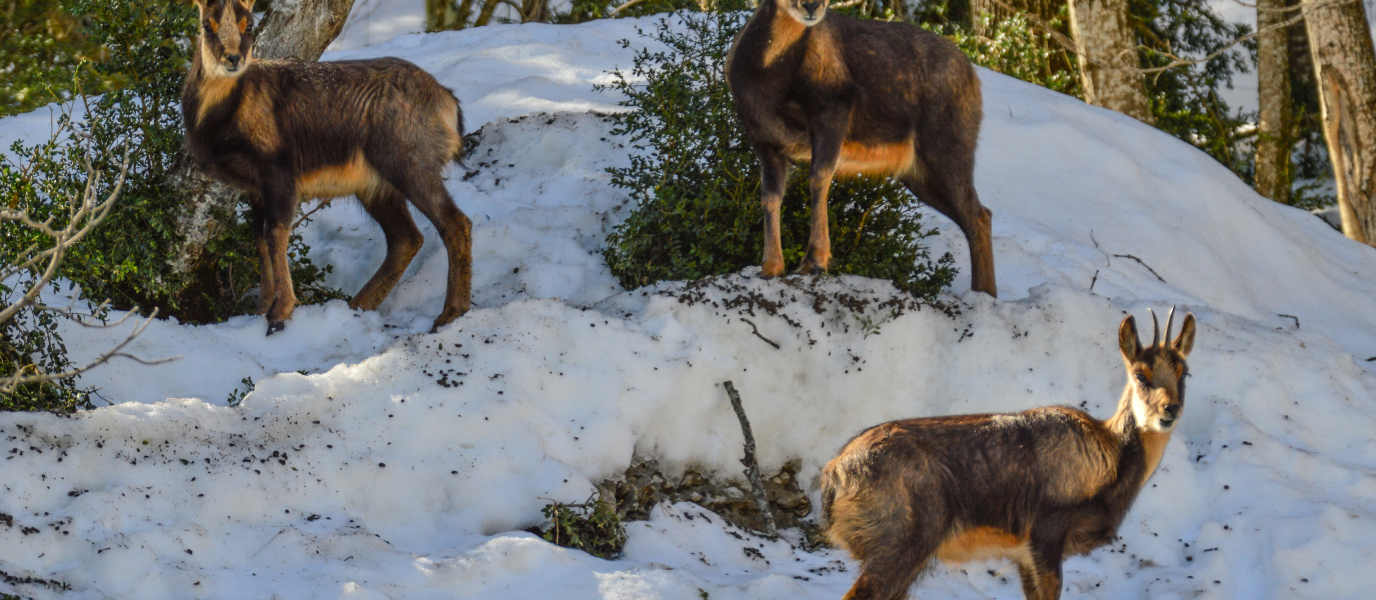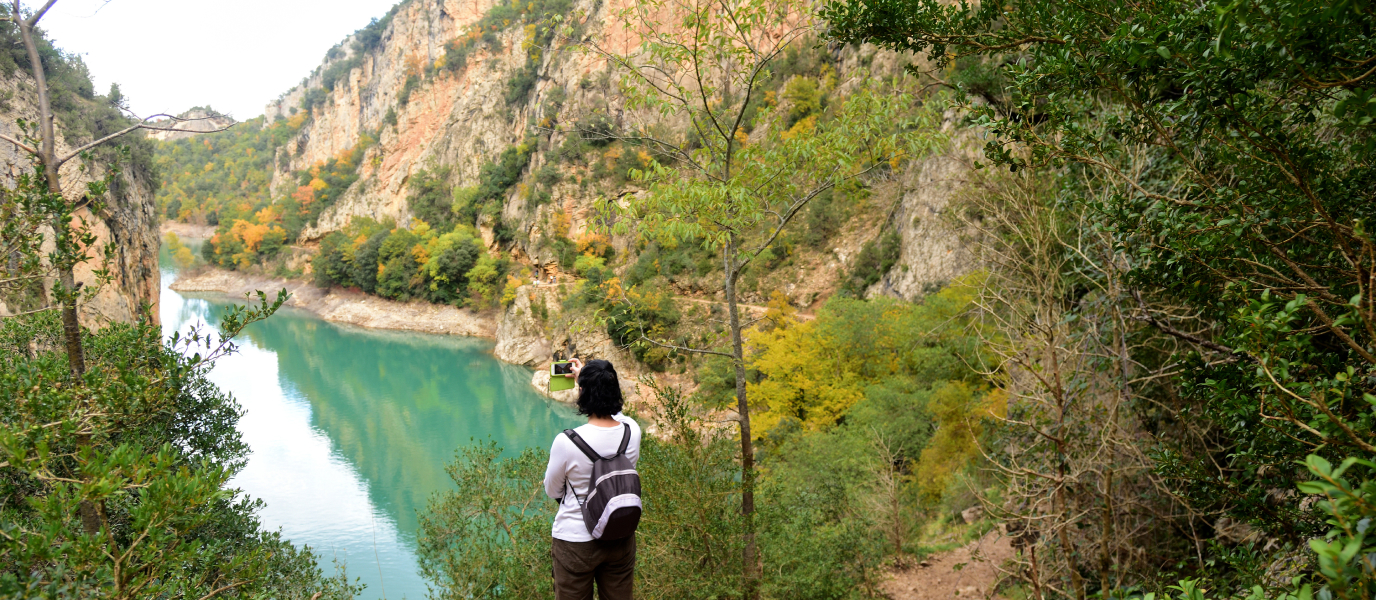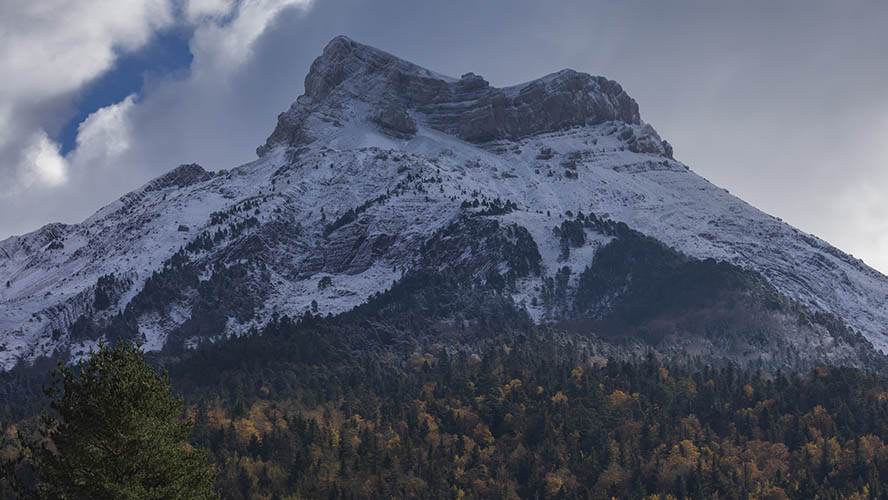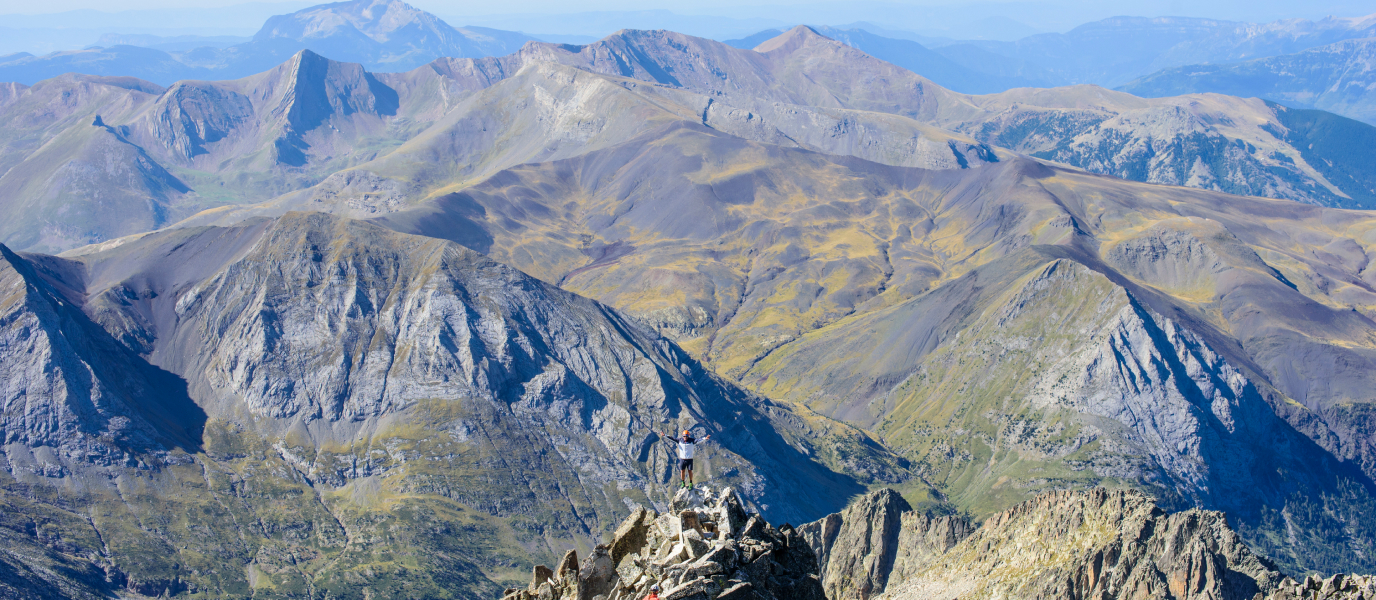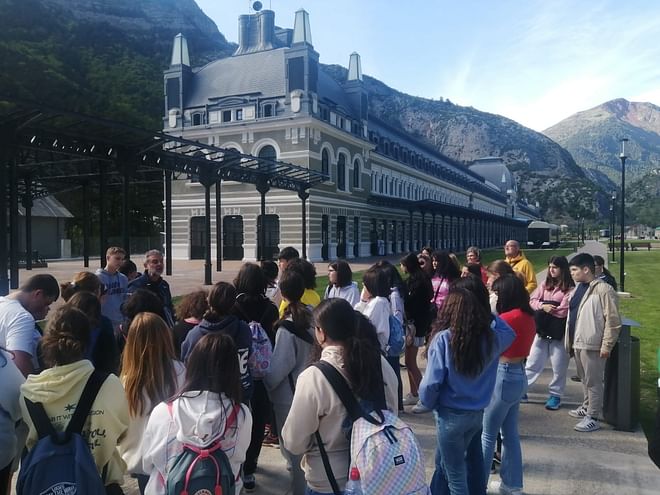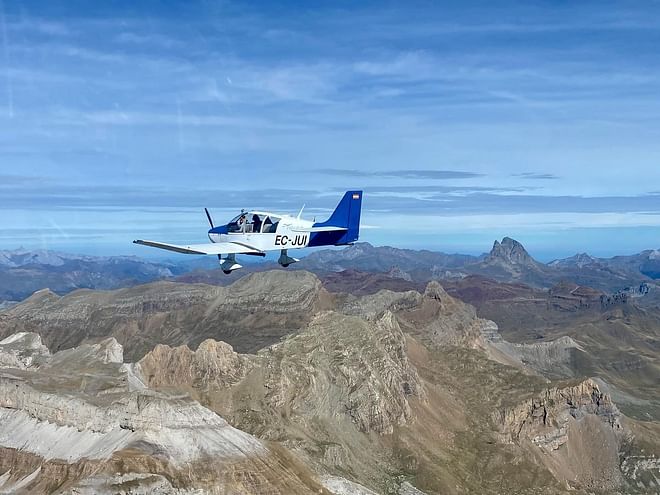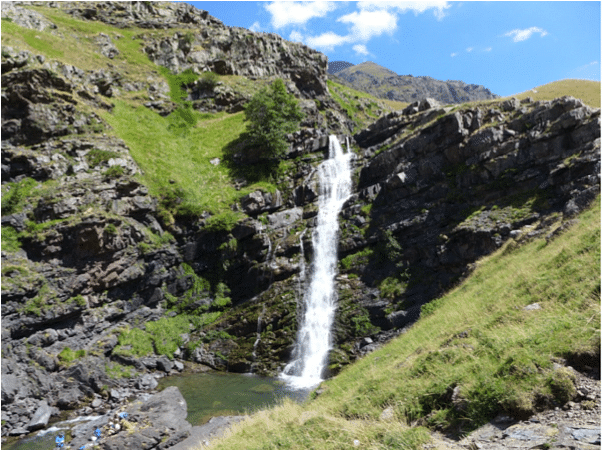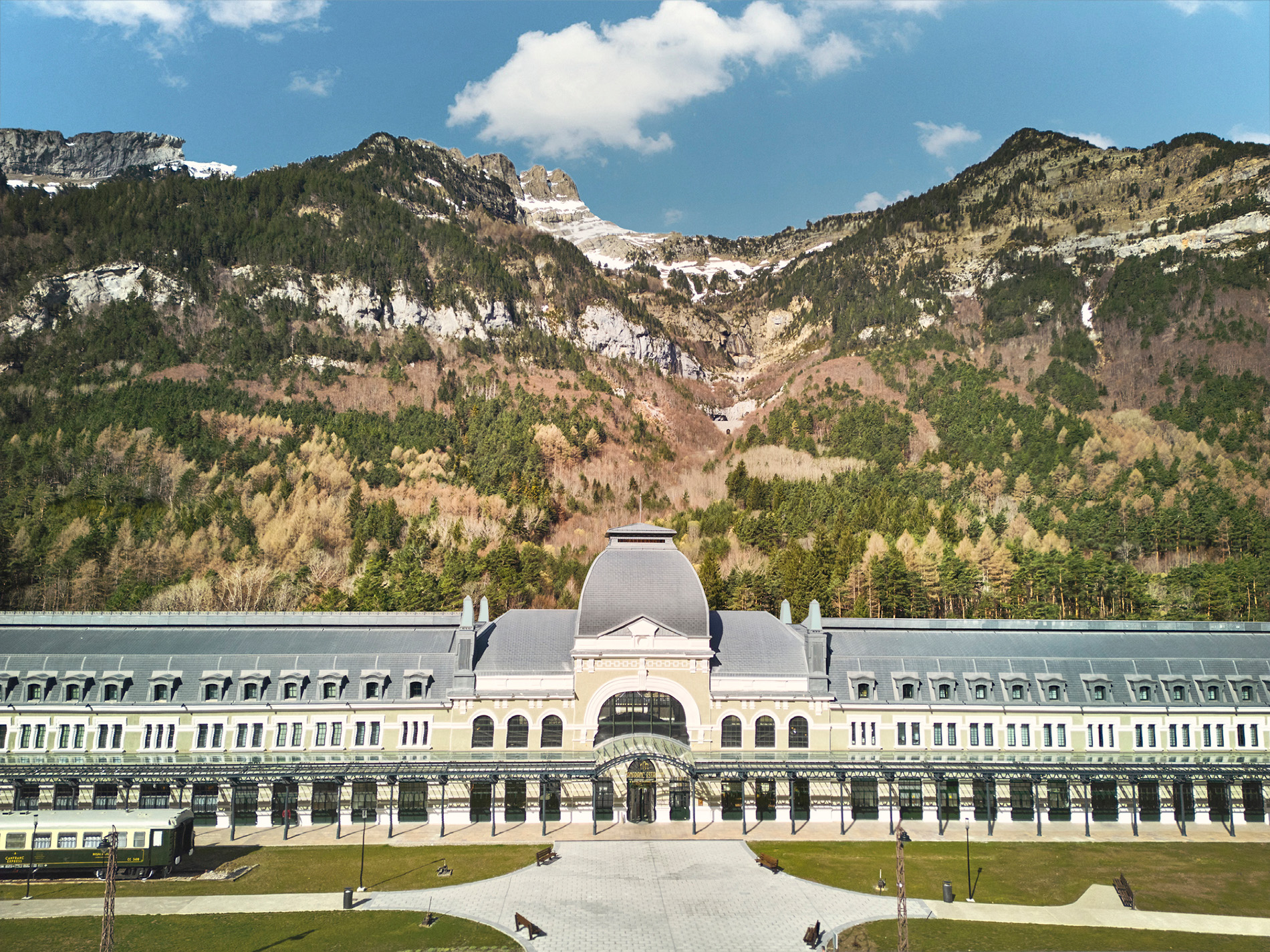In a privileged area and surrounded by the imposing Huesca Pyrenees mountains, there is a magical place, i.e. an area where we can learn first-hand about the bears, wolves, lynxes and the many other species who live or have lived in the Pyrenees. It is the Lacuniacha Wildlife Park, a biopark of over 30 hectares located in the heart of the La Pinosa forest in the Tena valley, in the municipality of Piedrafita de Jaca.
It is a must for families who love nature that visit the area. At Lacuniacha, species coexist which would otherwise be very difficult to see in the wilderness. By all accounts, it is a playful and informative experience that delights both young and old. We visit the park and highlight all the musts. Will you join us?
What is Lacuniacha and where it is located
Contrary to popular belief, Lacuniacha is not Huesca zoo. The Lacuniacha Wildlife Park is a biopark. The main difference between a zoo and a biopark is that, in a zoo, animals are confined in small spaces with the only purpose of exhibiting them to the public. On the contrary, in a biopark such as Lacuniacha, the species are in semi-wild conditions in a nature reserve. This type of park is aimed at being a sanctuary for animals who are born in captivity, come from a recovery centre or have been rescued precisely from places where they did not receive appropriate care. Apart from living in their own habitat, these species coexist and interact in a biopark such as this one with other autochthonous animals who roam around freely and can enter and exit the park perimeter without any problem.
Having made that distinction, we should now know where Lacuniacha is located. The Wildlife Park has 30 hectares and is located in the La Pinosa forest at an altitude of 1,380 metres. From there, you can enjoy incredible panoramic views of the Tena valley and the imposing summits of the La Partacua sierra, where the Telera peak stands out from all of them. The Wildlife Park forms part of the Ordesa-Viñamala Biosphere Reserve, the only reserve of these characteristics in Aragon.
The park was opened in 2001. The curious name of Lacuniacha refers to the natural lake which used to cover the area where the park is nowadays. A natural silting process left the area without water and the area was then colonised by vegetation.
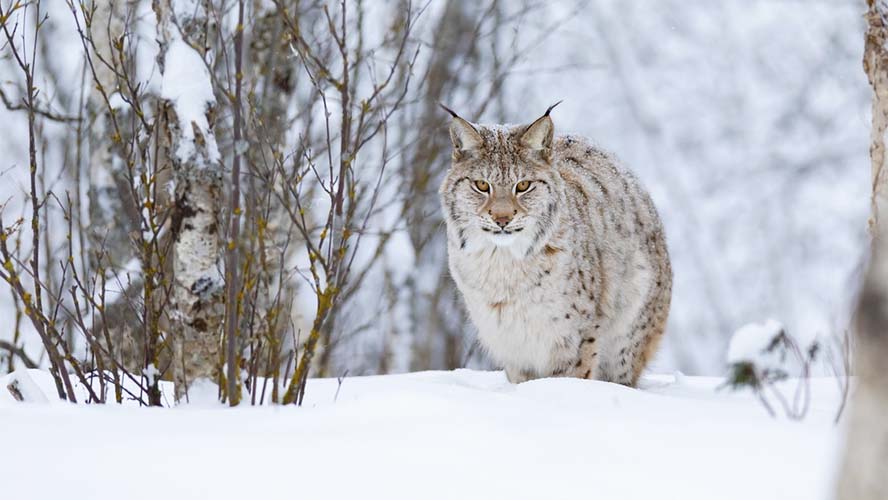
Route and species that you can see
There are around 120 animals of 15 different species at Lacuniacha. From the family Cervidae, you can see deer, roe deer and fallow deer. There are also beautiful reindeer from northern Europe. From the family Caprinae, you can see the Pyrenean chamois or chamois and the mountain goat, both animals which are typical of the summits and crests such as those in the Pyrenees.
Regarding the Bovidae, at Lacuniacha there are two beautiful species: the Heck cattle and the European bison. The former is an artificial breed created in the 1920s to recreate the extinct European auroch. Regarding the European bison, the Wildlife Park participates in a programme to recover this species which, back in the day, was the inspiration for the Altamira cave paintings but which, nevertheless, became critically endangered. Nowadays there are 2,700 specimens of this majestic animal in the wild in Europe. The calves borne at Lacuniacha are released into the wild among the small bison populations that live in northern Europe.
Other species that live in the Park are the wild boar, the mouflon (a beautiful and curious wild sheep) and the common fox. You can also see Przewalski’s or Mongolian horses, the only wild horse subspecies that exist; it is believed that there are only 1,000 specimens around the world. There are also specimens of the Iberian bear and Iberian wolf.
It is difficult to choose the star of the park among so many beautiful and varied species but, if there is one, it would clearly be the Eurasian lynx. It is the European relative of the Iberian lynx. You can distinguish the former from the latter because of its larger size and thicker fur. The lynx is a magnetic animal, so the possibility of one seeing us through its defiant gazes will leave a lasting memory.
In the park, you can also see other autochthonous neighbours who visit it such as moles, marmots, squirrels and birds.
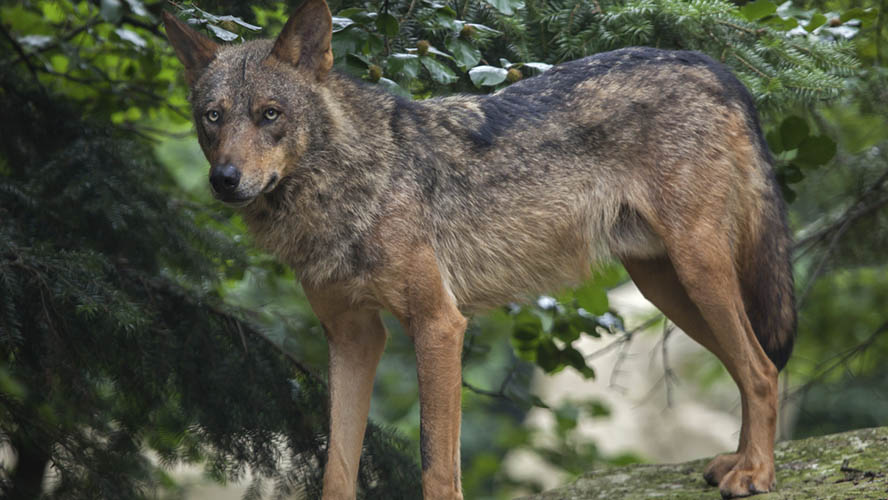
In parallel with the wildlife experience, the Park also has a botanical route with the 21 main plant species in the area, where there are information panels of all the plants. There are protected species such as the boxwood, Scots pine, and birch, oak and holly trees.
The Park provides a 4.5-kilometre route through a marked trail so that you can visit all the areas where the fauna live. It takes between 2 and 3 hours. Along the route, you will see how the various species eat, relax, interact with each other or breed. It is a circular route which, if done anticlockwise, i.e. if you start on the right when entering the Park, you will start by visiting the areas where the fox and Iberian wolf live. You will then go through the area where Przewalski’s horses, brown bears, bison and Heck cattle live. In that area, there is an observatory to see at first-hand the activity of the necrophagous birds such as the vultures.
After passing through the chamois area, there is a detour where you can go uphill towards a viewpoint where you can see the valley and the beautiful Partacua sierra. Going back to the route and leaving the mountain goat area behind, you will find a bar where you can rest and have a drink. The bar is on the opposite side of the Park’s entrance. After that break, the route goes through the area where there are fallow deer, deer, moufflon and roe deer until you reach the wild boar area, then return to the park entrance and end your visit.
Recommendations for your visit
The Lacuniacha Wildlife Park has a list of recommendations. Here we classify them:
- Bring appropriate footwear, mountain boots or trainers, depending on the weather, since you must remember that the routes are natural mountain trails and are not paved.
- The park is open all year round. In winter, you must bring warm clothing and mountain boots; hiking sticks are also highly recommended, especially if there is snow on the trails.
- Remember that smoking is forbidden throughout the Park.
- Do not bring animals.
- Since it is a high mountain area, you must previously inform yourself of the weather in the area and remember that the weather may suddenly change. Therefore, the recommendation is to always bring warm clothing, a rain jacket or sun cream.
- Apart from the all-terrain pushchairs, the others cannot be used on the trail, so the recommendation is to use baby carriers. You can hire this type of equipment at the park’s reception.
- You can only follow the trail route and must not leave it. You must respect the animals’ tranquillity.
- It is completely forbidden to uproot any plant species, many of which are protected.
Useful information:
How to get there
- By car: The Lacuniacha Wildlife Park is in the municipality of Piedrafita de Jaca, 2 kilometres from the village itself. The park is near the road from Huesca to France (A-136) between the villages of Biescas and Formigal. Around 10 kilometres from Biescas, you will see the marked exit to access the Park.
Visit
- Entry price: The entry is free for those under 4; the tickets for children (aged 4-11) and seniors (over 65) are 12 euros; those for youngsters (aged 12-17) are 14 euros; and those for adults are 16 euros. There are special prices for groups and large families.
- Opening times: The Lacuniacha Wildlife Park opens all year round. In July and August, it opens from Monday to Sunday between 10.00 a.m. and 8.00 p.m. Between 1 September and 15 October, and April, May and June, it opens from Monday to Friday between 10.00 a.m. and 6.00 p.m. and Saturday and Sunday between 10.00 a.m. and 8.00 p.m. In winter (between 16 October and 31 March), it opens from Monday to Sunday between 10.00 a.m. and 6.00 p.m. You can buy tickets up to two hours before the park closes.




































































